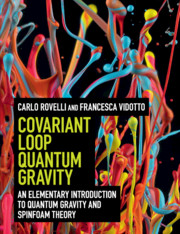5 - Three-dimensional euclidean theory
from Part II - THREE-DIMENSIONAL THEORY
Published online by Cambridge University Press: 05 February 2015
Summary
In order to find a quantum theory for the gravitational field, we can apply the general structure devised in Chapter 2 to the theory defined in Chapter 3, discretized as explained in Chapter 4. Since the resulting theory includes a number of technical complications, in this chapter we first complete a simpler exercise: apply this same strategy to euclidean general relativity in three spacetime dimensions, recalled in Section 3.5. This exercise allows us to introduce a number of ideas and techniques that will then be used in the physical case, which is the lorentzian theory in four spacetime dimensions.
There are major differences between general relativity in three dimensions and four dimensions. The foremost is that the 3d theory does not have local degrees of freedom: it is therefore infinitely simpler than the 4d theory. This is reflected in properties of the quantum theory that do not hold in the 4d theory. In spite of these differences, the exercise with the 3d theory is illuminating and provides insight into the working of quantum gravity, because in spite of its great simplicity the 3d theory is a generally covariant quantum theory of geometry.
Quantization strategy
To define the quantum theory we need two ingredients:
• A boundary Hilbert space that describes the quantum states of the boundary geometry.
• The transition amplitude for these boundary states. In the small ћ limit the transition amplitude must reproduce the exponential of the Hamilton function.
- Type
- Chapter
- Information
- Covariant Loop Quantum GravityAn Elementary Introduction to Quantum Gravity and Spinfoam Theory, pp. 99 - 117Publisher: Cambridge University PressPrint publication year: 2014



